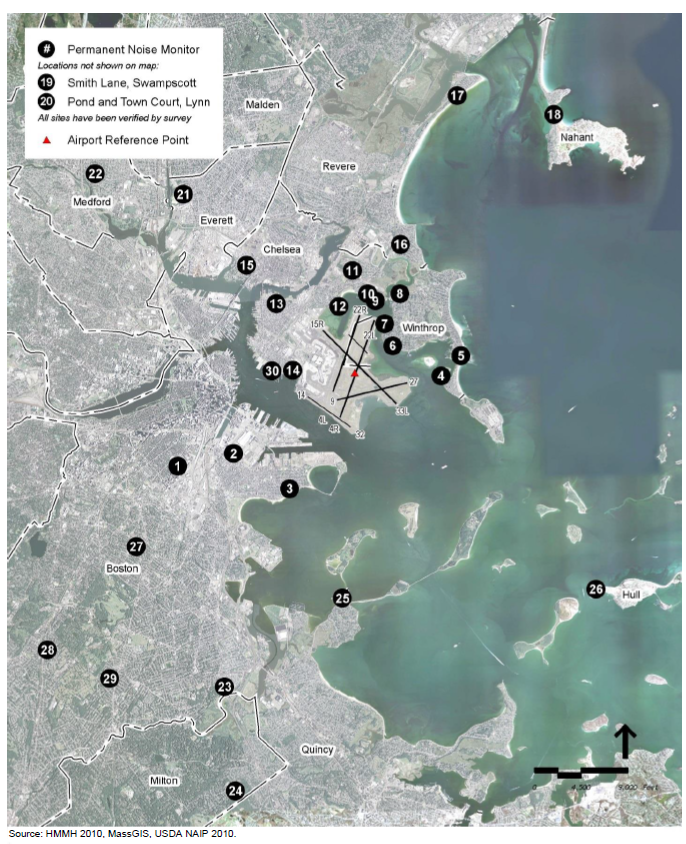Noise Abatement
Noise Monitoring
Massport has strategically placed 30 noise monitoring stations throughout the Boston metropolitan area to gather data and minimize the impact of noise from Boston Logan International Airport on the community. These stations collect daily readings using sensitive noise monitors capable of distinguishing the sound of passing planes thousands of feet overhead from the everyday traffic noise at ground level.
The results of these readings help Massport to monitor flight tracks, respond to community complaints, better understand the daily impact of Boston Logan on surrounding communities, and participate more effectively every year in the revision of Boston Logan’s noise contours by verifying the accuracy of the Federal Aviation Administration’s (FAA) noise model, the Aviation Environmental Design Tool.
Massport has made significant progress in minimizing noise over the years. Mitigation measures like nighttime restrictions on operations and noise abatement departure turns have dramatically decreased the exposure in the communities that surround Boston Logan.
The FAA has determined that an annual noise level of 65 dB DNL or higher is incompatible with residential areas. Massport has been tracking the number of people within the 65 DNL contour since 1987. In 1987, it was estimated that the total number of people exposed to more than the annualized 65 DNL was about 67,000. Reflecting the adoption of new engine technology and the reduction of the overall number of flights at Boston Logan, the population exposed to levels of noise in excess of 65 DNL decreased to 3,947 in 2011.
Noise Monitor Locations

- Union Park Street Playground, South End
- B and Bolton, South Boston
- Day Blvd. near Farragut, South Boston
- Bayview and Grandview, Winthrop
- Harborview and Faun Bar, Winthrop
- Somerset near Johnson, Winthrop
- Loring Road near Court, Winthrop
- Morton and Amelia, Winthrop
- Bayswater near Annavoy, East Boston
- Bayswater near Shawsheen, East Boston
- Selma and Orient, East Boston
- East Boston Yacht Club
- East Boston High School
- Jeffries Point Yacht Club, East Boston
- Admiral's Hill, Chelsea
- Bradstreet and Sales, Revere
- Carey Circle, Revere
- U.S.C.G. Recreational Facility, Nahant
- Smith Lane, Swampscott
- Pond and Towns Court, Lynn
- Tremont near Prescott, Everett
- Magoun near Thatcher, Medford
- Myrtlebank near Hilltop, Dorchester
- Cunningham Park near Fullers, Milton
- Squaw Rock Park, Quincy
- Hull High School near Channel St., Hull
- Boston Latin Academy, Roxbury
- Southbourne Road, Jamaica Plain
- Lewenburg School, Mattapan
- Piers Park, East Boston